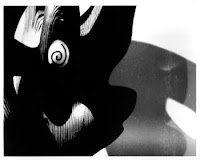by John O'Keefe-Odom
Commentary
Note: I had initially promised this as part I of III, yet found later that I had said enough. This will be the only installment. On to the next topic!
Chattanooga's got a communications problem with the Germans. If we don't start realizing what this problem is and fix it, then we might blow it.
As a matter of practice, we're blowing it slowly already.
Important tasks which need to get done now are getting bogged down. We're getting behind enough to begin growing a bad reputation by the watercooler.
Keep this up, and German executives will start to perceive that getting sent here will be like a trip to Siberia and her gulags.
That's only going to go on for so long before things grind to a halt. Once they grind to a halt, bad stuff happens next.
We need to get our act together a little more, so it's time for some German Business-Speak 101.
Shame and Speaking:
Or, Would You Like Your Shame With or Without Speaking, Please?
Everyone knows that Chattanooga's partnership with the German automotive industry is our chief hope for pulling ourselves out of an economic mud bog, but not everyone sees some of the problems with it that are right in front of our collective faces.
As the son of a GI Bride, I can surely tell you that there is a huge difference between American and German cultures. One of those leading differences is the concept of shame.
Americans are totally shameless. Hang on, because we'll go over that again. It means a little more than some people might think.
Germans come from a culture where people are raised with the concept of shame. It's not quite the same as what Americans might think of shame. In American English, shame is like a really strong embarrassed feeling, kind of like sadness mixed with anger over not getting accepted.
In German cultures shame is more like a heightened and very restrained consciousness of what the rest of the village might think. It's not only about social acceptance; it's also about starvation prevention.
That's right: starvation prevention.
Attention to, and the prevention of, shame comes from hundreds of years of warfare over the face of terrain that was restrictive. Societies which lived on that land were also largely agricultural. So, keeping a timetable was not only important to agriculture and trade, that same trading timetable was often habitually pressed by constant, impending war.
Don't get the seeds planted in time, and not only will there be no food, but there will be war and no food. A few hundred years of this, and the culture learns to keep a timetable. Germans have encountered this so much that keeping a schedule has become intensely internalized by almost everybody.
Massive business treaties and guilds have been carved out, historically, by dividing up social responsibilities for tasks in villages, in advance. The very survival of individuals has depended on how people buy and sell things, and that buying and selling has had a lot to do with how communications and social relationships are managed within the village.
Potential shame is a very strong influence on what people might say and do, or not say and do. It is very similar to the concepts of shame as they are handled by East Asian cultures.
East Asian cultures have also had long histories where warfare devastated large areas not just through direct violence, but also through the impact that war had on agriculture and trade.
In America, war had its biggest impact on farming and village life around the Civil War. That impact stopped affecting everybody in the nation sometime around 1890. With only about 30 years of that under our collective belts, it was easier for us to forget.
Imagine 500 years of a dozen nations each cycling through a constant stream of The American Civil War and Reconstruction. That'd be European History in a nutshell. It's affected those societies, permanently.
Remember that World War II Axis? Guess what? The partnership between the Germans and Japanese was not only of strategic importance at the time, it was also a partnership among cultures that were very similar in some characteristics, like daily village life.
Who cares about shame? We don't, because we're Americans. We're shameless. We're raised to believe in freedom, particularly freedom of expression. We're defiant; we're proud; we're boorish. More power to us.
We'll say anything. We've had the comedians and politicians to prove it. A list of the Presidents of the United States alone is a long line of totally shameless people who would say and do 'most anything at the time.
Yet, in German-American business negotiations, this disparity over how we perceive our neighbor perceiving us can create a huge, and sometimes very important, communications gap.
Like, our German partners may be silently suffering through a crisis which would cause our American brothers to explode in a fit of what Mom calls, "Army cursing." The Germans might just sit there quietly.
How May I Help You?
When Americans hear the words, "How may I help you," we usually expect that someone is going to take our order for burgers and fries.
When Germans speak the words, "How may I help you," it may very well mean, translated into American, "Hey, _____! We are in deep @#$%^&* over here! If you do not get off your _____ and get this ______ timetable completed, then @#$%^&* @#$%^&* @#$%^&* _____ _____ _____!"
You can see how that might lead to a communications gap.
It could mean that someone doesn't understand how important it is to get a certain something done. Like a large project with many, many specific goals: that could be an example of a situation where each one of those goals not met might generate an offer of help from the Germans. Meanwhile, that offer might not be recognized for what it is, a reminder that something needs to be done now.
While Americans have accepted for a long time that German culture is repressive, they often haven't really understood how this might manifest itself. There's a touch of stereotype in our imagined Repressed German; but, because he also loves beer, we can see ourselves getting along with him when he loosens up.
One of the ways this repression, which is cultural and not sexual, manifests itself is in what the German will or won't say.
In America, when someone won't say something, it must not be that big of a deal.
Oh, yes, it is.
The big deal on hand is money, or time as money. It's often an actual deal, a business plan or agreement. Here in Chattanooga, we might have noticed a recent increase in those, particularly those involving Germans.
Concepts of how people socially manage shame: that would be our first, most basic level, of observable misunderstanding.
# # #











